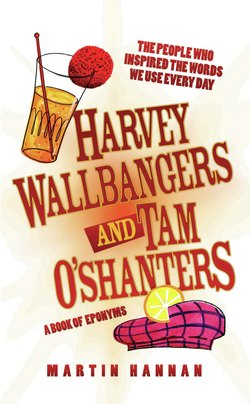Читать книгу Harvey Wallbangers and Tam O'Shanters - Martin Hannan - Страница 22
На сайте Литреса книга снята с продажи.
DICKENSIAN
ОглавлениеThe dickens of the thing about Charles Dickens is that his varied canon should be impossible to encapsulate in a single word.
Think of Charles Dickens’ books and most literate people will conjure up a plethora of scenes: Scrooge reaching out to Tiny Tim; Sidney Carton going bravely to the guillotine; Wilkins Micawber saying something will turn up; Oliver Twist asking for more; and Pip loving Estella after the looming presence of Magwitch.
With all the vast array of characters and locations in his books, why does the word ‘Dickensian’ conjure up an image of London’s reeking underbelly in Victorian times?
Some writers have used the adjective to describe Christmas scenes, and others use Dickensian in an almost pejorative sense, as in Dickensian whimsy or sentimentality. By far the most common usage of Dickensian, however, is linked to descriptions of 19th-century London, tales of tenemented slums and fog-bound streets full of orphaned children, heart-of-gold prostitutes and nasty thieves.
Dickensian poverty was very real, and Dickens himself experienced it. His father, John, was a Navy clerk until his rash spending landed him and his family – except young Charles – in Marshalsea Prison until his debts were repaid when an aunt died and left John Dickens a legacy.
The family left prison but continued to struggle, their income boosted partially by Charles working ten hours a day in a shoe-polish factory where working conditions were inhumane.
The genius of the author was to remember these bitter times and write so eloquently about them when he turned to journalism and fiction. He was a superb journalist who wrote shorthand fluently, allowing him to cover events and politics in a swift and memorable manner. It was when he moved into fiction that he truly exposed the horrors in which the poor and downtrodden lived in a style that was both readable and influential – such was the public outrage he occasioned by his books that entire slum areas were cleared and rebuilt.
Charles John Huffam Dickens was born in 1812 and died of a stroke at the age of 58 in 1870, by which time he was the most famous novelist in the world. His critics may say he was overly sentimental and that his characters bordered on caricatures, but his storylines and marvellous prose have survived a century-and-a-half as classics, and his books have never been out of print since they were first produced, mainly as serials in monthly magazines.
Not only did he give us an eponym based on his own name, but Dickens created many others – we still call unctuous people Uriah Heeps, while Gradgrindian and other eponyms brought about by Dickens have their place in dictionaries.
Yet had he not had a change of heart, we would never have heard of ‘Dickensian’. The author started, and meant to continue, his fiction-writing life as ‘Boz’ – the mispronounced nickname ‘Moses’ by his younger brother Augustine – as he was already producing major pieces of serious journalism under his own name, and did not want his first, often funny, stories to detract from that work. He was soon persuaded to change to his own name, however, and brought many topics from his London-based journalism into his fiction. He wrote about what he had personally seen and known, creating the Dickensian world that entrances readers to this day.
There is no official statue of Dickens in Britain. In his Will, the author stated that no such public memorial should be erected. Instead, he left us a host of great novels, and characters whose names have become eponyms, while his own eponymous world will live for as long as books are read. What finer memorial could there be?
